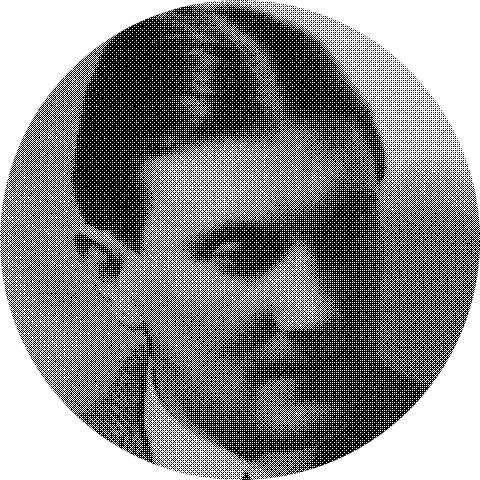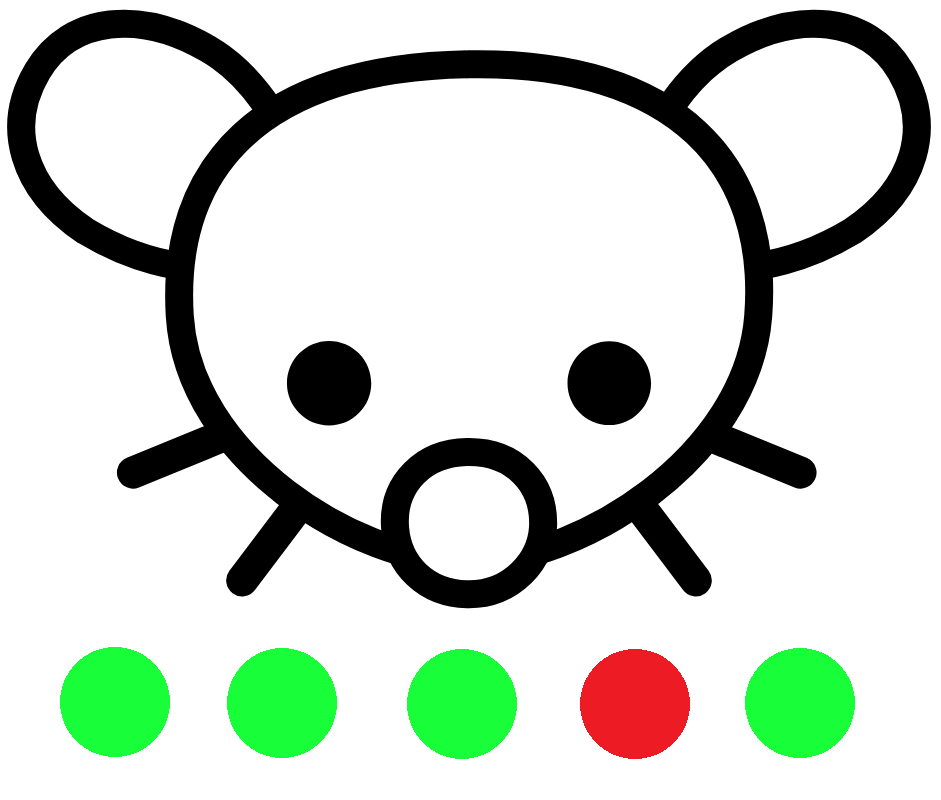Obligatory https://justfuckingusehtml.com/
- 1 Post
- 552 Comments

 62·1 day ago
62·1 day agoI travelled with DB to enjoy the 2022 9-€ Ticket. The cross-border train ČD drove into Germany got stopped in the first city and got cancelled because it “didn’t meet standards”. I mean, it was missing a car, there was no AC, it was super loud and crowded, but it was a train and went on time. DB’s replacement was literally nothing so I was stuck waiting in Schwandorf for an hour. This happens dozens of times every year.
Meanwhile, my trip last year was an orderly experience, probably because I went through former East Germany via Dresden instead. Communists did a lot of bad shit but they understood the power of trains (and streetcars).

 5·7 hours ago
5·7 hours agoI studied electronics and GSM was a big part of the telecommunications subject. I visited the HQ of a mobile provider, was shown around and met the cartel boss (in hindsight, I wonder how much a Luigi moment would have affected the triopoly). I also visited a museum of technology and used an early touch-click model still connected to the network (pre-DTMF so not touch-tone, and no buffer so you had to wait for the simulated dial to stop clicking).
But still, I don’t know the basics of wired phones cuz I’ve never really used them. How does voice travel both ways on a single twisted pair? How can Inspector Clouseau the telephone engineer in The Pink Panther (1978) hear a conversation from other phones in the house? How does the exchange know I’ve dialed the last digit? Can I use voice services on rotary phones, and what if I need to press * or #? All these would be obvious to 1980s kids…

 2·2 days ago
2·2 days agoMy grandma was a disabled stay-at-home mom with a hyperactive daughter who tended to run away and wreak havoc, and all the police would soon know who to return her to. Grandma was scolded by neighbors for using a leash but able to explain herself. This was in 1970s Czechoslovakia.

 6·3 days ago
6·3 days agoNo. Port forwarding, with or without a VPN, helps connectivity – you’ll be able to accept incoming connections.
Without a VPN, peers can see your IP address with or without port forwarding.
Also, what’s up with the tasks in the taskbar?
side bar
Not really, the text part (blue) takes up half of the right third plus the numeric part (red-orange) takes up most of the rest
Correct. The author used the long numeric section to encode the data, see my incomplete analysis in another comment.
Contrary to popular belief, this wasn’t made by making a very error-resistant code and sticking an image on top, as most “Logo-QR” codes are made today. AFAIK, the code is not only error-free but also up to spec*, unlike this Bad Apple one that, while also impressive, uses non-standard padding bytes after the actual data.
* Except the XOR mask pattern is not chosen to minimize problematic patterns like solid color areas in the result, obviously – but I’m not buying a $270 standard just to see if it says “should” or “must”.
The URL is very interesting. I’m trying to reverse-engineer the creation process of this code.
- The version (size) is 6 (41×41), just small enough to not have alignment patterns (extra squares).
- The masking pattern is 2, probably since that encodes as 3 black pixels as part of the picture.
- The error correction is set to the minimum or L, allowing the maximum possible number of bytes to be user-controlled. The number of content bits is 1088. Since one byte is used for length, the longest string that can be encoded is 134 bytes.
Here it is “unmasked”:

There can be multiple data types in a QR code. This one first has a bytes section, which readers interpret as text, and then a numeric section. Blue is the text part of the URL, red-orange is the numeric part, and green is error correction.
The raw data in the QR code is:0b 0100 Encoding: Bytes (Latin-1 text) 0b 00011011 Content Length: 27 0x 68 74 74 70 73 3A 2F 2F "https://" 0x 61 6E 61 6C 6F 67 6E 6F "analogno" 0x 77 68 65 72 65 2E 63 6F "where.co" 0x 6D 2F 23 "m/#" 0b 0001 Encoding: Numeric 0b 0011111100 Content Length: 252 0b 1100101111 [815] 0b 1110111100 [956] 0b 0000000000 [000] 0b 1110111011 [955] 0b 0101010101 [341] 0b 0011000100 [196] 0b 1001110010 [626] 0b 0101000100 [324] 0b 1000001101 [525] 0b 0101111000 [376] 0b 0110101010 [426] 0b 0111111100 [508] 0b 0000101100 [044] 0b 0000001011 [011] 0b 1100011111 [799] 0b 1000000100 [516] 0b 0000101010 [042] 0b 1010010101 [661] 0b 0101010011 [339] 0b 1000000110 [518] 0b 1010101110 [686] 0b 1010100101 [677] 0b 0101101100 [364] 0b 1000001000 [520] 0b 1110100011 [931] 0b 1110111000 [952] 0b 0100000000 [256] 0b 1110111010 [954] 0b 1101010101 [853] 0b 1001000010 [578] 0b 1000001011 [523] 0b 0000001000 [008] 0b 0010100011 [163] 0b 1101111110 [894] 0b 1110111101 [957] 0b 1111011111 [991] 0b 0010110100 [180] 0b 1101010101 [853] 0b 0100001100 [268] 0b 1000111010 [570] 0b 1010101010 [682] 0b 1010000011 [643] 0b 1110111111 [959] 0b 1101111111 [895] 0b 1011011010 [730] 0b 1001110100 [628] 0b 0010100010 [162] 0b 1010101010 [682] 0b 1010101010 [682] 0b 1010010101 [661] 0b 0111111010 [506] 0b 1001010001 [593] 0b 0101010101 [341] 0b 0111110111 [503] 0b 0101111111 [383] 0b 1111100101 [997] 0b 1000000101 [517] 0b 1110101010 [938] 0b 1001010101 [597] 0b 0101101110 [366] 0b 1010111000 [696] 0b 1010011101 [669] 0b 0101000101 [325] 0b 0000111110 [062] 0b 1010101010 [682] 0b 1011010101 [725] 0b 1000000000 [512] 0b 0000000011 [003] 0b 1110110111 [951] 0b 1111000100 [964] 0b 1000101100 [556] 0b 1010110101 [693] 0b 0100110101 [309] 0b 0100110101 [309] 0b 0010101010 [170] 0b 0000101001 [041] 0b 0101010101 [341] 0b 0101001100 [332] 0b 1111011111 [991] 0b 1111100110 [998] 0b 0000000000 [000] 0b 0111101010 [490] 0b 1001010101 [597] 0b 0101101110 [366] 0b 0000 End 0b 00Note that the numeric encoding uses 10 bits for each group of 3 digits. Let’s call it triplet-BCD. The last two bits are only to round up the data section to a whole number of bytes, specifically these 88 bytes:
41 B6 87 47 47 07 33 A2 F2 F6 16 E6 16 C6 F6 76 E6 F7 76 86 57 26 52 E6 36 F6 D2 F2 31 3F 32 FE F0 00 EE D5 53 12 72 51 20 D5 E1 AA 7F 02 C0 2F 1F 81 02 AA 55 53 81 AA EA 95 6C 82 3A 3E E1 00 EE B5 59 0A 0B 02 0A 3D FB BD F7 CB 4D 55 0C 8E AA AA 0F BF DF ED A9 D0 A2 AA AA AA 55 FA 94 55 57 DD 7F F9 60 5E AA 55 5B AB 8A 75 45 0F AA AB 56 00 00 FB 7F 12 2C AD 53 54 D4 AA 0A 55 55 33 DF F9 80 07 AA 55 5B 80What follows in the QR code is error correction bytes, 36 of them. The numbers in the right and mid-upper section of the image must have been chosen so that the error correction bytes end up forming the left half of the face, presumably via lots of trial-and-error. However, what I find very odd is that the decimal number the numeric section encodes, which you see at the end of the URL, translates to this in hex:
0x1c7dbd97f32cb00000000000000000000000000000000000000000000000000000000000000000000000000000000000000000000000000000000000000000000000000000000000000000000000000000000000000000000000000000000000000000000000000000This is not a floating point error, the triplet-BCD-encoded data really produces 501222037467851 × 2788, a very round number in binary!! I have no idea how that coincides with so many digits being used as part of the face in the weird triplet-BCD encoding.
Also, I haven’t been able to replicate the error correction algorithm: I think it’s the same as
reedsoloin Python but>>> from reedsolo import RSCodec >>> rawbytes=b"\x41\xB6\x87\x47\x47\x07\x33\xA2\xF2\xF6\x16\xE6\x16\xC6\xF6\x76\xE6\xF7\x76\x86\x57\x26\x52\xE6\x36\xF6\xD2\xF2\x31\x3F\x32\xFE\xF0\x00\xEE\xD5\x53\x12\x72\x51\x20\xD5\xE1\xAA\x7F\x02\xC0\x2F\x1F\x81\x02\xAA\x55\x53\x81\xAA\xEA\x95\x6C\x82\x3A\x3E\xE1\x00\xEE\xB5\x59\x0A\x0B\x02\x0A\x3D\xFB\xBD\xF7\xCB\x4D\x55\x0C\x8E\xAA\xAA\x0F\xBF\xDF\xED\xA9\xD0\xA2\xAA\xAA\xAA\x55\xFA\x94\x55\x57\xDD\x7F\xF9\x60\x5E\xAA\x55\x5B\xAB\x8A\x75\x45\x0F\xAA\xAB\x56\x00\x00\xFB\x7F\x12\x2C\xAD\x53\x54\xD4\xAA\x0A\x55\x55\x33\xDF\xF9\x80\x07\xAA\x55\x5B\x80" >>> rsc = RSCodec(36); print(rsc.encode(rawbytes).hex()) 41b68747470733a2f2f616e616c6f676e6f77686572652e636f6d2f2313f32fef000eed55312725120d5e1aa7f02c02f1f8102aa555381aaea956c823a3ee100eeb5590a0b020a3dfbbdf7cb4d550c8eaaaa0fbfdfeda9d0a2aaaaaa55fa945557dd7ff9605eaa555bab8a75450faaab560000fb7f122cad5354d4aa0a555533dff98007aa555b80662d719c3ef320500601c1e3f6fd3b517a3e1f06c9a7d4140c7c78af219b3b39f5dd2053does not yield the expected error correction bytes I can see in the unmasked code (green)…
Actually I think the QR code contains no errors, it’s all in the weird numeric data. There are still things I don’t understand but see my other comment for analysis.

 37·6 days ago
37·6 days agoNever lived up to the hype. Take almost as much effort to get ready for another flight as building another one.

 83·6 days ago
83·6 days agoall taxpayer money anyway
Yes but with very little to show for it. If the government just treated all undelivered orders as debt, it would end up deep in the red.
Idk why the original considered Czech names “czad”, they’re quite unremarkable:
♙ Foot soldier
♖ Tower
♔ King
♕ Lady (not Queen because that would start with the same letter as King)
♗ Archer
♘ Cavalryman (sometimes also Horse but that also starts with K)(Pěšec, věž, král,
královnadáma, střelec, jezdec/kůň.)
Around age 12 I read in a recreational maths book that 16/64=16̸/6̸4=1/4 works and I was lucky to encounter this at school while solving a problem on a whiteboard. This is not the case for this fraction but I wonder if there are any non-trivial examples of polynomial division where this works.
Lemmy and ActivityPub devs couldn’t make federated votes work otherwise. Idk if it’s even posssible without some extensive cryptographic operations.
unverified
It’s not about verification but accessibility
On Slavic layouts, the right Alt key (AltGr) lets us type symbols like
[,],{,},&,,#,×,÷,€,đsince 0-9 is for diacritical letters by default and numbers with Shift. Still, Czech Windows users mostly use Alt codes, which is a point of friction when switching to Linux. But there, I’m happy with how I can customize the AltGr and the new AltGr+Shift layers with curly quotes, em dash, nbsp, hair space, arrows, middle dot, pi (π), pretty pi (𝛑), mu, Omega etc. My Compose key is RCtrl.

 9·9 days ago
9·9 days agoCARD READER: Card Reader
What cards are we talking about? If it’s punch cards, you might be out of luck.
There are competently built towers in Pisa, and then there’s a world-famous one.




Yes, I know about phreakers but what I mean is, phone numbers differ by length. Did the exchange wait until no more tones/clicks in a while or is there a variable length acheved by, say, making all area codes start with 0?